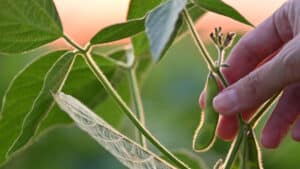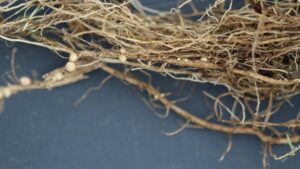Growers under pressure to maximize yield for every seed planted can’t afford to ignore Phytophthora seed, root and stem rot.
Considered the number one seedling disease in soybean production, Phytophthora is an oomycete fungus which can cause stand loss at nearly any point in the growing cycle. Early-season infection is favored in fields or field areas that are saturated for 24-48 hours especially within the first 10 days after planting. Mid to late-season plant death or injury can occur as well if conditions are favorable. Sandy soil areas are typically not conducive environments for the disease unless saturation from prolonged rain exists.
“The 2017 season showed typical variation across and within states regarding Phytophthora disease infection,” said Ron Sabatka, product development manager for DuPont’s Seed Applied Technology platform.
“Every year there will be variation due to weather patterns and planting conditions. The bottom line is, one cannot predict when Phytophthora will become more prevalent as we know rain patterns vary dramatically, thus 2017 was a typical year.”
Phytophthora sojae and P. sansomeana are the two species which infect soybeans, however P. sojae is more prevalent. The oospore stage of the fungus can persist for several years without a soybean host within organic matter or freely in the soil. Oospores germinate to zoospores when soil temperatures near 60°F and swim in the soil water to find a root host.
Genetic resistance or partial resistance is commonly bred into today’s modern soybean varieties. Five resistant gene options are being used, but there are cases where virulent populations have overcome the single gene resistance. Partial resistance through non-race specific means is commonly called “field resistance or tolerance.” Combining single resistant to phytophthora sojae (Rps) genes together with non-race or “field tolerance” is common, while stacking Rps resistant genes is less common.
Managing Phytophthora is typically done with a multi-faceted approach through crop rotation, genetic resistance and seed treatments. Although growers can’t control the rain that falls on their fields, those who irrigate must be vigilant to prevent prolonged soil saturation.
Lumisena™, a new seed treatment option, is being introduced in 2018 to help bolster growers’ defenses against the disease. The fungicide is a new tool that’s highly active against Phytophthora, offering better stand and yield protection than the current fungicide standards. In more than 600 field trials across the top 10 soybean growing states, Lumisena™ provided a 1.0 bushel per acre advantage over the current Phytophthora seed treatment standard. Results from those trials also showed Lumisena™ provided a 4.0 bushel per acre advantage averaged across one-third of those sites.
References:
- Phytophthora sojae: Diversity among and within Populations, A. Dorrance & N. Grunwald













